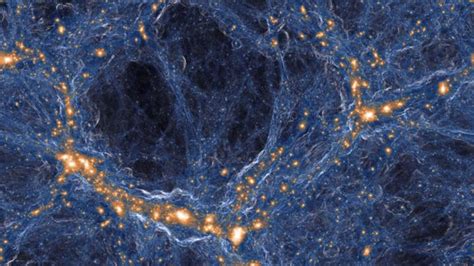Breaking News


Popular News


Explore the mysteries of dark matter, its theoretical foundations, and the experimental efforts to detect this elusive cosmic phenomenon.In the vast expanse of the universe, one of the most enigmatic substances remains shrouded in mystery: dark matter. Though it makes up about 27% of the cosmos, its presence is inferred through gravitational effects on visible matter, yet it remains undetectable by traditional means. This blog post will delve into the fascinating world of dark matter, beginning with an introduction to its significance and properties, followed by a look at the theoretical frameworks that scientists have developed to understand it better. Additionally, we will explore the various experimental attempts made to detect this elusive substance, shedding light on the challenges and breakthroughs in this frontier of astrophysics. Join us on this journey as we unravel the secrets of dark matter and its crucial role in shaping our universe.
Contents
Dark matter is one of the most intriguing and mysterious components of our universe. Although it constitutes approximately 27% of the universe’s total mass and energy, it does not emit, absorb, or reflect any electromagnetic radiation, making it invisible to current instruments. This elusiveness is primarily what makes dark matter so fascinating to scientists and astronomers alike.
The concept of dark matter was first proposed in the early 20th century when astronomers observed that the visible matter in galaxies and galaxy clusters did not account for the gravitational effects observed. For instance, the rotational speeds of galaxies suggested that there was significantly more mass present than could be seen. To explain this discrepancy, scientists hypothesized the existence of dark matter.
Various methods have been employed to study and understand dark matter, including gravitational lensing, cosmic microwave background radiation analysis, and galaxy rotation curves. All these techniques collectively provide strong evidence for the existence of dark matter, despite the fact that it has yet to be directly detected in laboratory settings.
Dark Matter remains one of the most perplexing components of the universe, eluding direct detection despite constituting about 27% of the cosmos. Theoretical physicists have proposed various models to explain its existence and properties, many of which challenge our current understanding of fundamental physics.
One prominent theory is the Weakly Interacting Massive Particles (WIMPs) hypothesis. WIMPs are envisioned as a class of particles that interact via the weak nuclear force and gravity, making them difficult to detect. These particles are predicted to have masses in the range of 10 to 1000 GeV/c², and extensive research has been conducted to identify potential candidates through experiments like the Large Hadron Collider.
Another intriguing avenue of research involves the concept of Modified Newtonian Dynamics (MOND). This theory proposes alterations to Newton’s laws of motion at low accelerations, aiming to explain the observed galaxy rotation curves without invoking dark matter. While MOND has garnered support from some observational data, it remains a contentious alternative, continually debated within the astrophysics community.
Further theoretical frameworks include the exploration of supersymmetry and extra dimensions, which provide potential candidates for dark matter particles. Supersymmetry posits a partner particle for every known particle, leading to candidates like the lightest supersymmetric particle (LSP) that could serve as dark matter. Meanwhile, theories involving extra dimensions posit that dark matter could be a manifestation of particles confined to additional spatial dimensions.
The struggle to comprehend dark matter reflects our broader quest to understand the universe’s composition and fundamental forces. As research advances, so does our hope of unraveling the mysteries of dark matter.
Throughout the past few decades, scientists have made significant strides in the quest to understand dark matter. While theoretical frameworks provide insights into the existence of this elusive substance, physicists have also engaged in a myriad of experimental attempts to detect it directly. These experiments aim to uncover the nature of dark matter particles, which are believed to make up approximately 27% of the universe.
Several leading experiments have emerged, utilizing diverse technologies and methodologies. Some of the prominent experimental attempts include the following:
The results from these experiments have not produced definitive evidence of dark matter yet, but they continue to refine our understanding of its properties and characteristics. By pushing the boundaries of technology and theoretical physics, these experimental attempts are critical in the ongoing investigation of one of the universe’s greatest mysteries.
What is dark matter?
Dark matter is a form of matter that does not emit, absorb, or reflect light and is detectable only via its gravitational effects on visible matter.
Why is dark matter important in astrophysics?
Dark matter is crucial in astrophysics because it makes up about 27% of the universe’s mass-energy content and influences galaxy formation and dynamics.
How do scientists infer the presence of dark matter?
Scientists infer the presence of dark matter through its gravitational effects on stars and galaxies, such as the rotation curves of galaxies and gravitational lensing.
What are some of the leading theories about the composition of dark matter?
Some leading theories suggest that dark matter may be composed of weakly interacting massive particles (WIMPs), axions, or sterile neutrinos.
What role does dark matter play in the structure of the universe?
Dark matter plays a significant role in the structure of the universe by acting as a scaffold around which visible matter clusters, facilitating the formation of galaxies and large-scale structures.
What experiments are currently being conducted to detect dark matter?
Current experiments include direct detection efforts like the LUX-ZEPLIN experiment and indirect detection through observatories looking for signals from dark matter annihilation.
What is the significance of dark matter in relation to dark energy?
Dark matter and dark energy are both crucial components of the universe; while dark matter contributes to the formation and stability of structures, dark energy is thought to drive the accelerated expansion of the universe.